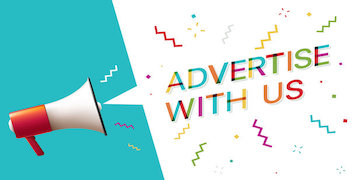MacTalk
August 2023
The Unbearable Ambiguity of Emoji
A picture is said to be worth a thousand words, implying you’d need a thousand words to describe a single image. Emoji are much simpler—maybe just ten words would suffice. But there’s still plenty of room for interpretation within the picture/text exchange rate, as a recent Canadian court case shows.
A grain buyer in Saskatchewan, Canada, texted farmers asking to buy flax at $17 per bushel, and one farmer indicated he could deliver on that. The buyer texted a photo of the contract, as it had done numerous times before, and asked, “Please confirm flax contract.” The farmer replied with a thumbs-up ???? emoji. But when prices for flax jumped to $41 per bushel and the farmer failed to deliver on the less-lucrative contract, the buyer sued for breach.
The facts of the case aren’t in question; the nut of the issue is whether the farmer’s ???? response had the legal meaning of “I accept the contract that you just texted me” or merely implied “I’m acknowledging receipt of the contract.” Judge Timothy Keene ruled that the farmer’s ???? counted as a signature and the farmer had thus breached the contract:
This court readily acknowledges that a ???? emoji is a non-traditional means to “sign” a document but nevertheless under these circumstances this was a valid way to convey the two purposes of a “signature” – to identify the signator (Chris using his unique cell phone number) and as I have found above – to convey Achter’s acceptance of the flax contract.
This emoji-driven ruling didn’t come out of thin air. The grain buyer’s attorney said in documents filed in the case that the farmer had previously agreed to contract at least four other times in text by replying “looks good”, “ok”, or “yup”.
More generally, the farmer’s lawyer argued that:
…allowing a simple ???? emoji to signify identity and acceptance would open up the flood gates to allow all sorts of cases coming forward asking for interpretations as to what various different emojis mean – for example what does a ???? emoji mean or a ???? emoji mean, etc.
The judge wasn’t swayed, responding:
This appears to be a sort of public policy argument. I agree that this case is novel (at least in Saskatchewan) but nevertheless this Court cannot (nor should it) attempt to stem the tide of technology and common usage – this appears to be the new reality in Canadian society and courts will have to be ready to meet the new challenges that may arise from the use of emojis and the like.
This story has been making the rounds based primarily on its humor value, often missing the fact that the farmer had laconically agreed to contracts before. But I’ve long been perturbed about the use of emoji in text communications when there’s room for interpretation. It’s one thing to toss in a smiley or frowning face to add emotional color to text, but entirely another to rely on an image to convey something significant. Sometimes a cigar is just a cigar, but an ???? isn’t always just an eggplant.
It was in this context that I read about the draft Emoji 15.1 list that contains recommendations for new emoji that will likely become final in September 2023, alongside the release of Unicode 15.1. (Apple would likely integrate them into its operating systems in early 2024.) This batch of emoji is very particular—most are new sequences that combine existing characters. Of the 118 candidates, 108 merely change directionality, so a slew of emoji that currently only face left will now be available facing right as well. That seems uncontroversial, but meaning still rears its ugly head with the proposed Head Shaking Horizontally and Head Shaking Vertically emoji. Emojipedia says:
Designs for the ????↔️ Head Shaking Horizontally and ????↕️ Head Shaking Vertically may pose some semantic difficulties for emoji designers, given that they can have inverted meanings in different cultures. For example, while a nodding head such as intended to be depicted in the ????↕️ Head Shaking Vertically emoji is a positive “yes” in the United States, in Bulgaria it conveys a negative “no” meaning.
There’s no stuffing emoji back into the bottle, though I suspect relatively few TidBITS readers use emoji heavily to stand in for true textual communications, rather than as simple reactions or emotional color. Even if you know what you intend an emoji to mean, there’s no telling how someone else will interpret it. And the next time you’re selling flax, perhaps stick with saying what you mean in actual words until the powers that be develop a Signature emoji.
Contents
Website design by Blue Heron Web Designs



